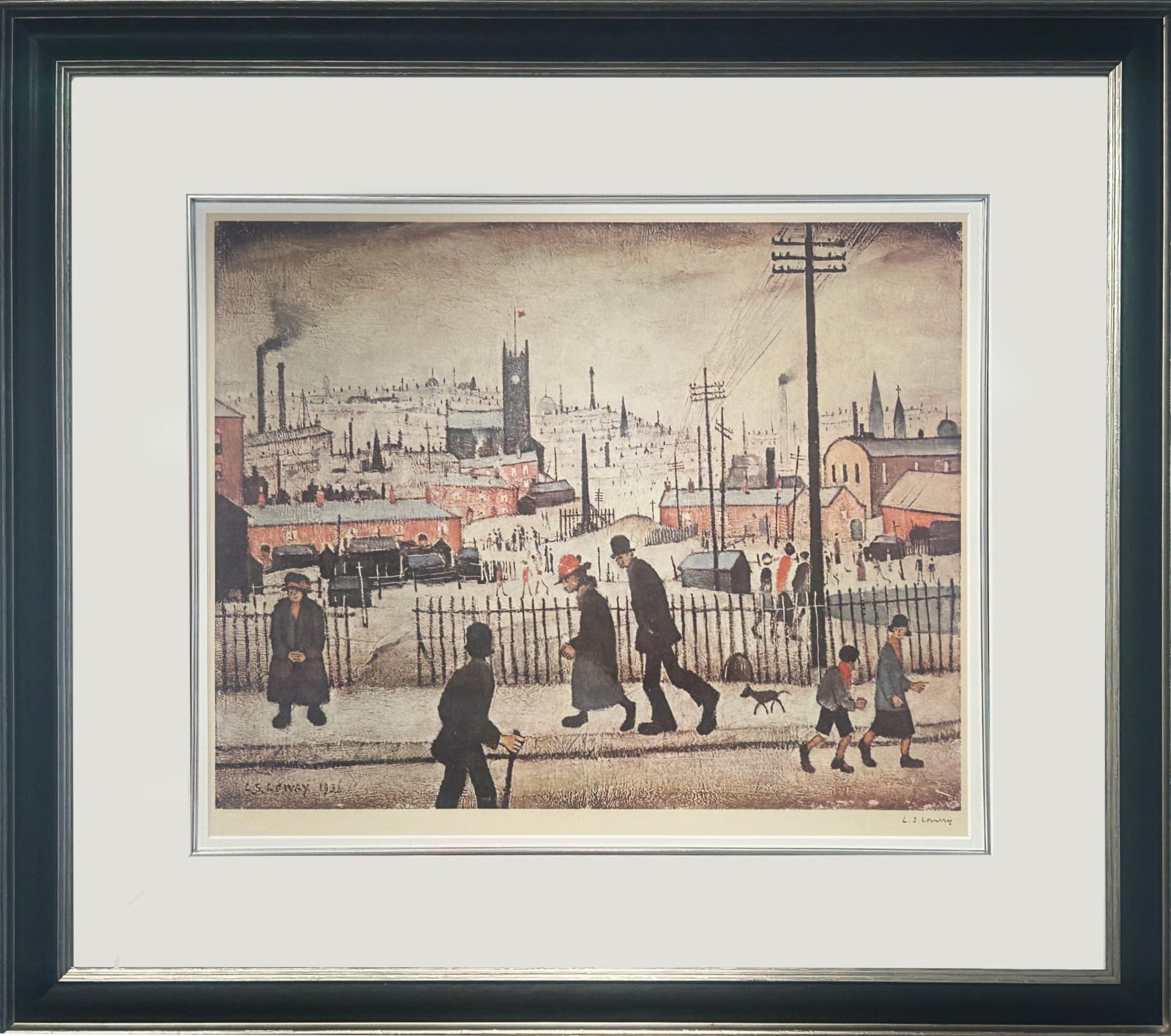Lowry’s art, for all its apparent simplicity, still lingers in the collective memory — factory chimneys, terraced streets, crowds of matchstick men trailing home after the shift.
What might, at first, look naïve or sparse often carries something far more layered. There’s restraint, yes, but also an unshakable honesty. In a way, L.S. Lowry painted what many lived — and what many still recognise. For collectors and casual viewers alike, his vision hasn’t lost relevance.
If anything, it’s gained weight with time. His work speaks softly, yet unmistakably, about class, identity, and the lives that shaped Britain’s urban past. That’s why, frankly, it’s still hard to look away.
Opening Thoughts

There’s something about the perspective of L.S. Lowry that still cuts through. He didn’t pretend to see beauty where there was none, and he didn’t try to beautify what already had its own kind of dignity. Lowry painted working life as he saw it: plain, powerful, real. Not draped in metaphor, not abstracted into theory. Just there. The factories, the damp pavements, the tired pace of people who kept things moving. In some respects, that’s why his art remains so relevant.
He wasn’t looking for spectacle. He was recording. And in doing that, he offered something more permanent than nostalgia — a kind of social memory that feels both personal and public. For many viewers, that memory still resonates. It feels familiar. It feels like home.
Lowry’s approach might seem understated, yet the emotional pull of his paintings is, frankly, hard to ignore. There’s a particular clarity to his work, not just in the way he saw the world, but in the way he invited others to see it too.
The Everyday Made Visible
So much of what Lowry painted might’ve been overlooked by others — unremarkable moments, unassuming people, everyday settings. Yet that’s precisely what gave his work weight. He turned the ordinary into something worth holding onto. The men in flat caps, women with shopping bags, children clustered by factory gates, weren’t elevated with symbolism or softened with sentiment; they were seen, quite literally, on their own terms.
This kind of visibility matters. It didn’t just reflect working-class life; it dignified it. Art, more often than not, had ignored such lives, or romanticised them into something they were not. Lowry didn’t do that. He made space on the canvas for people who rarely got to take up space elsewhere. And in doing so, he created something that still feels, surprisingly, like recognition. Not flattery. Not pity. Just a clear, human record.
Style That Stuck

There’s probably no artist more associated with “matchstick men” than Lowry — and yet, reducing his work to that shorthand misses the point. His figures may be spare, almost diagrammatic, but they carry an emotional weight that goes far beyond their outlines. That’s part of the paradox. What looks minimal ends up feeling deeply familiar.
His palette was limited — greys, ochres, and faded whites — but it worked. The repetition of terraced streets, smoke-stained skies, and hunched bodies created rhythm. Not quite bleak, not quite hopeful. Just, in a way, persistent.
Lowry painted buildings that looked tired, and people who probably were. And yet, he didn’t try to fix them up. He let them stand as they were. That style, stripped of excess, was a kind of clarity. And that’s why it sticks — because it doesn’t try too hard, yet it leaves something behind.
Emotion Without Glamour
Lowry’s art didn’t dramatise life, but it didn’t flinch from it either. That balance, the refusal to dress hardship up or strip it of feeling, gives his work its particular grip. There’s often a sense of stillness in his paintings, but it’s not passive. It feels like waiting. Or bearing. Or enduring.
As The Guardian noted, he “saw the loneliness of crowds and the crowding of loneliness.” That observation, honestly, says more in a few words than most critical essays do. You see it in the narrow pavements, the hunched backs, the absence of trees or softness. These aren’t scenes built for comfort; they just are.
Lowry didn’t pity the lives he showed. He didn’t ignore them either. He just kept them visible, without filtering out the struggle. That’s what gives his work emotional weight — not sentimentality, but something sharper. Something real.
Still Relevant

So much has changed — and yet, strangely, so little has. The factories might be quieter, but the questions in Lowry’s paintings haven’t gone away. Who gets noticed? Who gets left behind? What does it mean to work, to belong, to persist?
His urban scenes might feel dated at a glance, but then you catch yourself. Tower blocks still crowd skylines. People still rush to nowhere in particular. Class still shapes lives in ways that rarely get discussed, let alone painted.
Lowry’s work didn’t try to offer solutions, but it did ask to be looked at. And that, arguably, is what keeps it relevant. It’s not just art from the past — it still speaks to the present. Quietly, but consistently. Like someone you see every day on your way to work, and only later realise you knew all along.
Why He Endures
Lowry didn’t set out to charm, and yet, people return to his work again and again. Part of that might be because he wasn’t trying to impress. He told the truth as he saw it, which, frankly, is rare. That honesty makes his paintings hard to forget, and even harder to dismiss.
Collectors still seek him out, not just for the historical weight, but for how recognisable his art feels. There’s value in that — emotional, yes, but also market value. L.S. Lowry paintings have remained consistently desirable, often retaining or increasing in value. His legacy, in that sense, isn’t just cultural. It’s also material.
At Contemporary Six, authenticated works by Lowry aren’t locked away in archives — they’re available. You can see them, ask about them, and even own one. Contact us if you're curious. Sometimes art just speaks — and this still does.
It’s not just nostalgia that draws people to Lowry. It’s the sense that something familiar is being acknowledged — without embellishment, without judgement. That could be why his paintings linger. They don’t demand a reaction. They simply show you what’s there.
So the question isn’t whether Lowry’s art still matters. It’s why, even now, it manages to feel personal. Maybe you’ve walked those streets. Maybe you’ve felt that kind of quiet. Or maybe, like many, you just recognise something human in those thin painted lines. Either way, the world he captured hasn’t entirely gone — and perhaps that’s the point.

